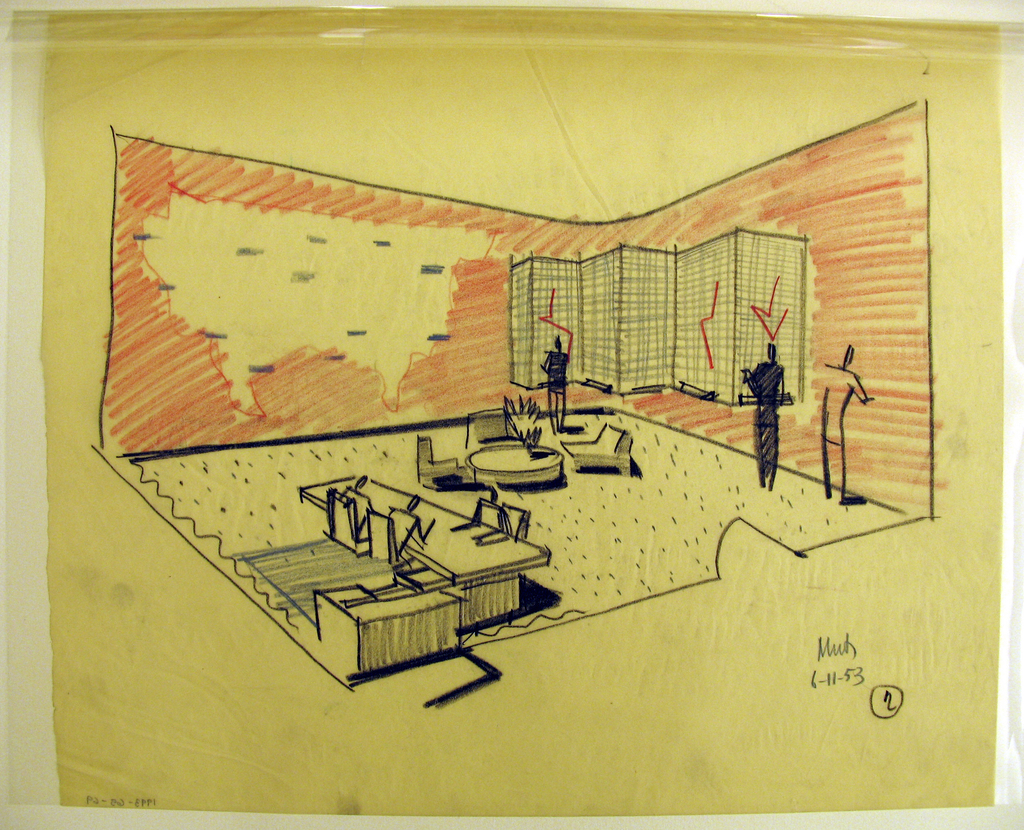In his famous book, On The Road (1957), Jack Kerouac relays a cross-country adventure he undertook in 1949:
“…. eyes bent on Frisco and the coast, we came into El Paso as it got dark, broke. We absolutely had to get some money for gas or we’d never make it. We tried everything. We buzzed the travel bureau, but no one was going West that night. The travel bureau is where you go for share-the-gas-rides, legal in the West.”[1]
Travel bureau representatives helped post-World War II travelers venturing along the same route to share rides in exchange for gas money. While Kerouac describes travel bureaus as places where “shifty characters wait with battered suitcases,” this design for the interior of the Cities Service Travel Bureau by draftsman Marcel Mouton for Henry Dreyfuss Associates, perhaps aims to change the image of the travel bureaus with a comfortable, modern, appealing, and highly-functional environment.
Travel and tourism skyrocketed in America against the backdrop of the postwar period. Government and tourism officials promoted travel as a constructive, educational, and meaningful way to spend both leisure time and money in the postwar era, so with more prosperity, more optimism, and more leisure time than previous generations, millions of Americans packed up their automobiles and set out on the new highways and the open road to explore their country.
Henry Dreyfuss (1904-1972) – one of America’s most celebrated industrial designers of the twentieth century – worked by the guiding principle that “… if people are made safer, more comfortable, more eager to purchase, more efficient – or just plain happier – by contact with the product, then the designer has succeeded.”[2] In accordance with this principle, Mouton’s designs for the interior of the Cities Service Travel Bureau brought people into contact with the product – or in this case, the experience – that they were looking to purchase. His design features a large-scale map of America; a picture of an automobile; routes across the country; and representatives to talk to. For travelers attending travel bureaus in order to share a ride, Mouton’s design made the notion of hitchhiking a safer, more secure, and efficient option.
[1] Jack Kerouac, On The Road (USA: Viking Press, 1957).
[2] Henry Dreyfuss, Designing For People (New York: Paragraphic Books, 1955).
Rebecca Gross is a design historian and freelance researcher and writer. She has a Masters in the History of Decorative Arts and Design from Parsons The New School for Design / Cooper Hewitt, Smithsonian Design Museum, New York; and is currently undertaking a PhD at the University of Sydney focusing on American studies, visual culture, and the history of travel and tourism.
